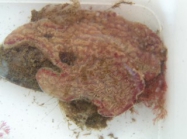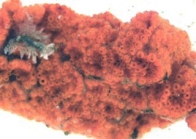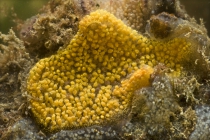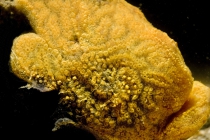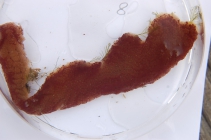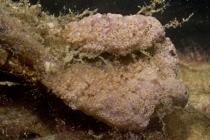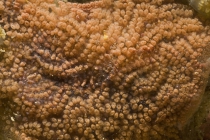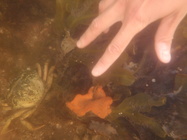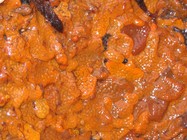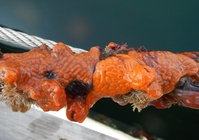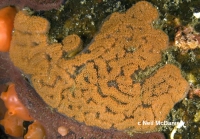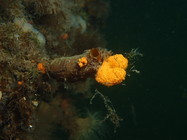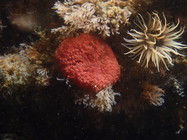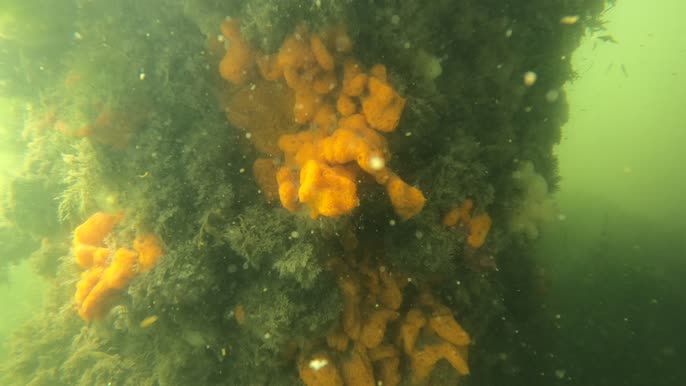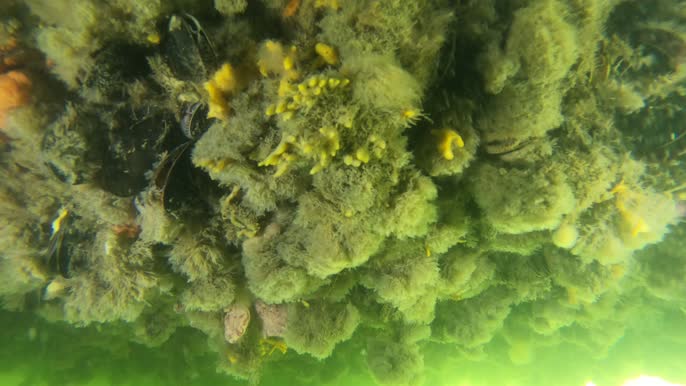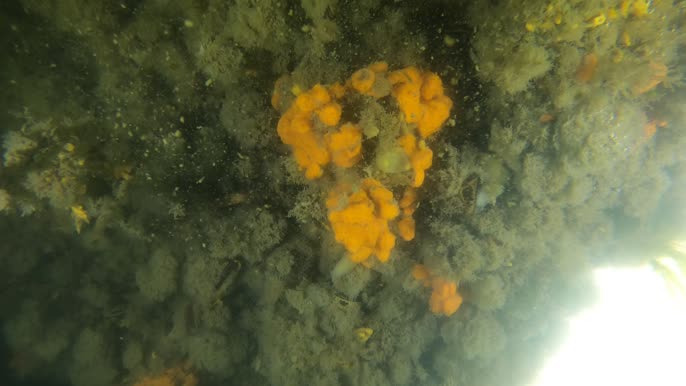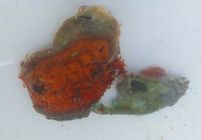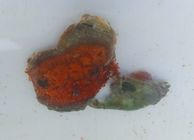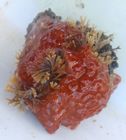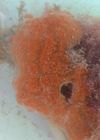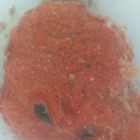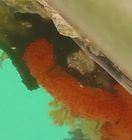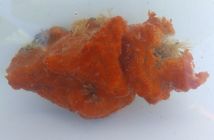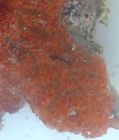Scheldt species taxon details
Botrylloides violaceus Oka, 1927
148715 (urn:lsid:marinespecies.org:taxname:148715)
accepted
Species
marine, fresh, terrestrial
Oka, A. (1927). Zur kenntnis der japanishen Botryllidae (Vorlaufige Mitteilung). <em>Proc. Imp. Acad.</em> 3: 607-609. [details] Available for editors 
Shenkar, N.; Gittenberger, A.; Lambert, G.; Rius, M.; Moreira da Rocha, R.; Swalla, B.J.; Turon, X. (2025). Ascidiacea World Database. Botrylloides violaceus Oka, 1927. Accessed through: VLIZ Consortium Scheldt Species Register at: https://www.scheldemonitor.nl/speciesregister/aphia.php?p=taxdetails&id=148715 on 2025-09-12
VLIZ Consortium. Scheldt Species Register. Botrylloides violaceus Oka, 1927. Accessed at: https://www.scheldemonitor.be/speciesregister/aphia.php?p=taxdetails&id=148715 on 2025-09-12
Date
action
by
original description
Oka, A. (1927). Zur kenntnis der japanishen Botryllidae (Vorlaufige Mitteilung). <em>Proc. Imp. Acad.</em> 3: 607-609. [details] Available for editors 
context source (Introduced species) Katsanevakis, S.; Bogucarskis, K.; Gatto, F.; Vandekerkhove, J.; Deriu, I.; Cardoso A.S. (2012). Building the European Alien Species Information Network (EASIN): a novel approach for the exploration of distributed alien species data. <em>BioInvasions Records.</em> 1: 235-245., available online at http://easin.jrc.ec.europa.eu [details] Available for editors
context source (HKRMS) Huang ZG., Li ZY., Morton B. & Leung TY. (2000). Biofouling of cage mariculture zones in the southern waters of Hong Kong. In: Morton B, editor. Asian Marine Biology 16. Hong Kong University Press, Hong Kong. pp 77-99. [details]
context source (Schelde) (2010). Bedreiging voor biodiversiteit. Indicatoren voor het Schelde-estuarium. <em>Opgemaakt in opdracht van Afdeling Maritieme Toegang, projectgroep EcoWaMorSe, Vlaams Nederlandse Scheldecommissie. VLIZ Information Sheets, 200. Vlaams Instituut voor de Zee (VLIZ): Oostende.</em> 7 pp. (look up in IMIS) [details]
basis of record Faasse, M.; De Blauwe, H. (2002). De exotische samengestelde zakpijp Botrylloides violaceus Oka, 1927 in Nederland (Ascidiacea: Pleurogona: Styelidae) [The exotic colonial tunicate Botrylloides violaceus Oka, 1927 in the Netherlands (Ascidiacea: Pleurogona: Styelidae)]. <em>Het Zeepaard.</em> 62(5): 136-141. (look up in IMIS) [details]
additional source Streftaris, N., A. Zenetos & E. Papathanassiou. (2005). Globalisation in marine ecosystems: the story of non-indigenous marine species across European seas. <em>Oceanogry and Marine Biology: an Annual Review.</em> 43: 419-453. (look up in IMIS) [details] Available for editors
additional source Saito, Y.; Mukai, H.; Watanabe, H. (1981). Studies on Japanese styelid ascidians 2. A new species of the genus Botrylloides and redescription of B. violaceus Oka. <em>Publ. Seto Mar. Biol. Lab.</em> 26: 357-368. [details]
additional source Occhipinti-Ambrogi, A., A. Marchini, G. Cantone, A. Castelli, C. Chimenz, M. Cormaci, C. Froglia, G. Furnari, M.C. Gambi, G. Giaccone, A. Giangrande, C. Gravil, F. Mastrototaro, C. Mazziotti, L. Orsi-Relini & S. Piraino. (2010). Alien species along the Italian coasts: an overview. <em>Biological Invasions.</em> 13(1): 215-237., available online at https://doi.org/10.1007/s10530-010-9803-y [details] Available for editors
additional source Liu, J.Y. [Ruiyu] (ed.). (2008). Checklist of marine biota of China seas. <em>China Science Press.</em> 1267 pp. (look up in IMIS) [details] Available for editors
additional source Zenetos, A., S. Gofas, M. Verlaque, M. Cinar, J. Garcia Raso, C. Bianchi, C. Morri, E. Azzurro, M. Bilecenoglu, C. Froglia, I. Siokou, D. Violanti, A. Sfriso, G. San Martin, A. Giangrande, T. Katagan, E. Ballesteros, A. Ramos-Espla, F. Mastrototaro, O. Ocana, A. Zingone, M,. Gambi & N. Streftaris. (2010). Alien species in the Mediterranean Sea by 2010. A contribution to the application of European Union's Marine Strategy Framework Directive (MSFD). Part I. Spatial distribution. <em>Mediterranean Marine Science.</em> 11(2): 381-493., available online at https://doi.org/10.12681/mms.87 [details]
additional source Izquierdo-Muñoz, A.; Díaz-Valdés, M.; Ramos-Esplá, A.A. (2009). Recent non-indigenous ascidians in the Mediterranean Sea. <em>Aquatic Invasions.</em> 4(1): 59-64., available online at http://www.aquaticinvasions.net/2009/AI_2009_4_1_IzquierdoMunoz_etal.pdf [details]
additional source Zenetos, A., E. Meric, M. Verlaque, P. Galli, C.F. Boudouresque, A. Giangrande, M. Cinar & M. Bilecenoglu. (2008). Additions to the annotated list of marine alien biota in the Mediterranean with special emphasis on Foraminifera and Parasites. <em>Mediterranean Marine Science.</em> 9(1): 119-165., available online at https://doi.org/10.12681/mms.146 [details] Available for editors
additional source Marchini, A., J. Ferrario, A. Sfriso & A. Occhipinti-Ambrogi. (2015). Current status and trends of biological invasions in the Lagoon of Venice, a hotspot of marine NIS introductions in the Mediterranean Sea. <em>Biological Invasions.</em> 17:2943–2962., available online at https://doi.org/10.1007/s10530-015-0922-3 [details] Available for editors
biology source Tepolt, C. K. (2014). Adaptation in marine invasion: a genetic perspective. <em>Biological Invasions.</em> 17(3): 887-903., available online at https://doi.org/10.1007/s10530-014-0825-8
note: Here, I review evidence for adaptation in marine invasion, considering both quantitative and genetic studies. [details] Available for editors
context source (Introduced species) Katsanevakis, S.; Bogucarskis, K.; Gatto, F.; Vandekerkhove, J.; Deriu, I.; Cardoso A.S. (2012). Building the European Alien Species Information Network (EASIN): a novel approach for the exploration of distributed alien species data. <em>BioInvasions Records.</em> 1: 235-245., available online at http://easin.jrc.ec.europa.eu [details] Available for editors
context source (HKRMS) Huang ZG., Li ZY., Morton B. & Leung TY. (2000). Biofouling of cage mariculture zones in the southern waters of Hong Kong. In: Morton B, editor. Asian Marine Biology 16. Hong Kong University Press, Hong Kong. pp 77-99. [details]
context source (Schelde) (2010). Bedreiging voor biodiversiteit. Indicatoren voor het Schelde-estuarium. <em>Opgemaakt in opdracht van Afdeling Maritieme Toegang, projectgroep EcoWaMorSe, Vlaams Nederlandse Scheldecommissie. VLIZ Information Sheets, 200. Vlaams Instituut voor de Zee (VLIZ): Oostende.</em> 7 pp. (look up in IMIS) [details]
basis of record Faasse, M.; De Blauwe, H. (2002). De exotische samengestelde zakpijp Botrylloides violaceus Oka, 1927 in Nederland (Ascidiacea: Pleurogona: Styelidae) [The exotic colonial tunicate Botrylloides violaceus Oka, 1927 in the Netherlands (Ascidiacea: Pleurogona: Styelidae)]. <em>Het Zeepaard.</em> 62(5): 136-141. (look up in IMIS) [details]
additional source Streftaris, N., A. Zenetos & E. Papathanassiou. (2005). Globalisation in marine ecosystems: the story of non-indigenous marine species across European seas. <em>Oceanogry and Marine Biology: an Annual Review.</em> 43: 419-453. (look up in IMIS) [details] Available for editors
additional source Saito, Y.; Mukai, H.; Watanabe, H. (1981). Studies on Japanese styelid ascidians 2. A new species of the genus Botrylloides and redescription of B. violaceus Oka. <em>Publ. Seto Mar. Biol. Lab.</em> 26: 357-368. [details]
additional source Occhipinti-Ambrogi, A., A. Marchini, G. Cantone, A. Castelli, C. Chimenz, M. Cormaci, C. Froglia, G. Furnari, M.C. Gambi, G. Giaccone, A. Giangrande, C. Gravil, F. Mastrototaro, C. Mazziotti, L. Orsi-Relini & S. Piraino. (2010). Alien species along the Italian coasts: an overview. <em>Biological Invasions.</em> 13(1): 215-237., available online at https://doi.org/10.1007/s10530-010-9803-y [details] Available for editors
additional source Liu, J.Y. [Ruiyu] (ed.). (2008). Checklist of marine biota of China seas. <em>China Science Press.</em> 1267 pp. (look up in IMIS) [details] Available for editors
additional source Zenetos, A., S. Gofas, M. Verlaque, M. Cinar, J. Garcia Raso, C. Bianchi, C. Morri, E. Azzurro, M. Bilecenoglu, C. Froglia, I. Siokou, D. Violanti, A. Sfriso, G. San Martin, A. Giangrande, T. Katagan, E. Ballesteros, A. Ramos-Espla, F. Mastrototaro, O. Ocana, A. Zingone, M,. Gambi & N. Streftaris. (2010). Alien species in the Mediterranean Sea by 2010. A contribution to the application of European Union's Marine Strategy Framework Directive (MSFD). Part I. Spatial distribution. <em>Mediterranean Marine Science.</em> 11(2): 381-493., available online at https://doi.org/10.12681/mms.87 [details]
additional source Izquierdo-Muñoz, A.; Díaz-Valdés, M.; Ramos-Esplá, A.A. (2009). Recent non-indigenous ascidians in the Mediterranean Sea. <em>Aquatic Invasions.</em> 4(1): 59-64., available online at http://www.aquaticinvasions.net/2009/AI_2009_4_1_IzquierdoMunoz_etal.pdf [details]
additional source Zenetos, A., E. Meric, M. Verlaque, P. Galli, C.F. Boudouresque, A. Giangrande, M. Cinar & M. Bilecenoglu. (2008). Additions to the annotated list of marine alien biota in the Mediterranean with special emphasis on Foraminifera and Parasites. <em>Mediterranean Marine Science.</em> 9(1): 119-165., available online at https://doi.org/10.12681/mms.146 [details] Available for editors
additional source Marchini, A., J. Ferrario, A. Sfriso & A. Occhipinti-Ambrogi. (2015). Current status and trends of biological invasions in the Lagoon of Venice, a hotspot of marine NIS introductions in the Mediterranean Sea. <em>Biological Invasions.</em> 17:2943–2962., available online at https://doi.org/10.1007/s10530-015-0922-3 [details] Available for editors
biology source Tepolt, C. K. (2014). Adaptation in marine invasion: a genetic perspective. <em>Biological Invasions.</em> 17(3): 887-903., available online at https://doi.org/10.1007/s10530-014-0825-8
note: Here, I review evidence for adaptation in marine invasion, considering both quantitative and genetic studies. [details] Available for editors
 Present
Present  Inaccurate
Inaccurate  Introduced: alien
Introduced: alien  Containing type locality
Containing type locality
| Language | Name | |
|---|---|---|
| Dutch | slingerzakpijpgewone slingerzakpijp | [details] |
| English | colonial sea squirt | [details] |
Guide to the exotic species of San Francisco bay - Botrylloides violaceus
Marine Life Information Network - UK
To Barcode of Life (54 barcodes)
To Biodiversity Heritage Library (14 publications)
To Biological Information System for Marine Life (BISMaL)
To European Nucleotide Archive, ENA (Botrylloides violaceus)
To GenBank (912 nucleotides; 79 proteins)
To Information system on Aquatic Non-Indigenous and Cryptogenic Species (AquaNIS)
To Niet-inheemse soorten Belgisch deel Noordzee en aanpalende estuaria (in Dutch)
To PESI
To USNM Invertebrate Zoology Chordata Collection (3 records)
Marine Life Information Network - UK
To Barcode of Life (54 barcodes)
To Biodiversity Heritage Library (14 publications)
To Biological Information System for Marine Life (BISMaL)
To European Nucleotide Archive, ENA (Botrylloides violaceus)
To GenBank (912 nucleotides; 79 proteins)
To Information system on Aquatic Non-Indigenous and Cryptogenic Species (AquaNIS)
To Niet-inheemse soorten Belgisch deel Noordzee en aanpalende estuaria (in Dutch)
To PESI
To USNM Invertebrate Zoology Chordata Collection (3 records)
